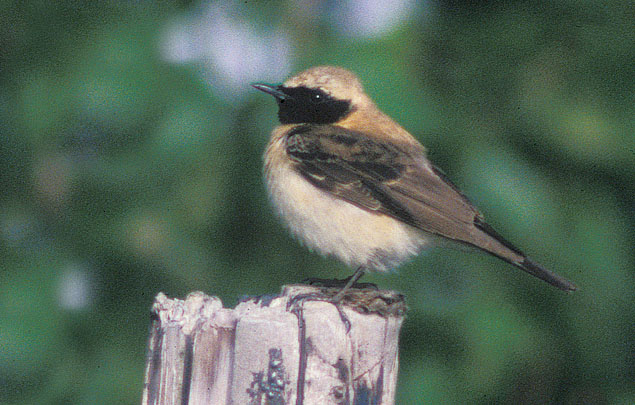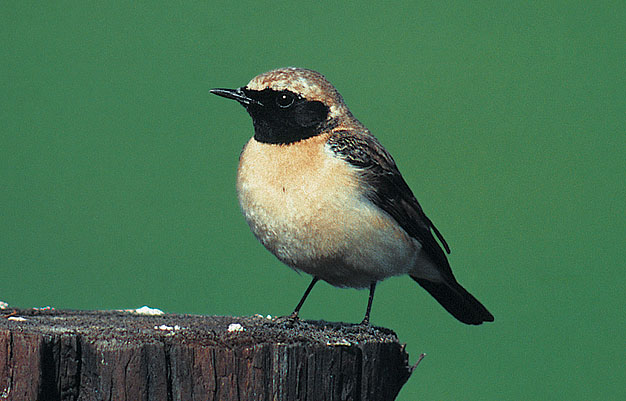Eastern Black-eared Wheatear - Oenanthe melanoleuca
On Sunday June 2nd 1996 near Aagtekerke (Zeeland), Marcel Klootwijk discovered a wheatear (Oenanthe spec) on the bicycle path (very Dutch!). He reported it to birders nearby, but first they thought it was a Desert Wheatear Oenanthe deserti. Because a Steller's Eider Polysticta stelleri was reported nearby the previous day, a lot of birders were in the neighbourhood.
So shortly after the discovery Lammert van der Veen from Amsterdam (or was it Sander Lilipaly from Middelburg?) arrived at the scene, saw it's tail only and reported it immediately as a Black-eared Wheatear Oenanthe hispanica. Within hours, the whole circus gathered (including me) and the bird was seen till Tuesday June 4th 1996.

2 June 1996, Aagtekerke Zld; © Arnoud van den Berg.

4 June 1996, Aagtekerke Zld; © René Pop.
At that time until 2002 it was thought this bird was a Western Black-eared Wheatear. However, Kirsten Mild commented as follows: "...Rather typical bird with obvious “immature impression” produced by black greater coverts with slight brownish tinge. “Immature impression” in itself a character for melanoleuca. Contrast between greyish, “dirty” crown/nape and “cleaner” ochre mantle typical for melanoleuca, while hispanica normally has warmer, “smoother” ochre crown, nape and mantle, much in the manner of adult males. Contrast between blackish greater coverts and brownish primary coverts and remiges is a sign of immaturity, but note that the greater coverts are not “adult black” as in most immature hispanica. Throat-bib too large for hispanica (and ochre of breast reaching the throat-bib). Moreover, there is too much black on lores for hispanica..."
This was the 7th record for the Netherlands. Previous records were in 1937,
1970, 1972, 1975, 1982 and 1991 (cf Dutch Birding 18: 154-155, 1996). Of these, the records from 1972, 1991 and subsequently this from 1996 were accepted as belonging to the Eastern form, the others as belonging to the western form (cf van den Berg & Bosman in: Rare Birds of The Netherlands 2001: 253-255), after a review following an excellent article by Magnus Ullman (Dutch Birding 25 (3): 77-97 and 98-99, 2003).
Do you want to go to the main-index,
to the 1996-index or do you want to see the next species, the Blyth's Reed Warbler?

